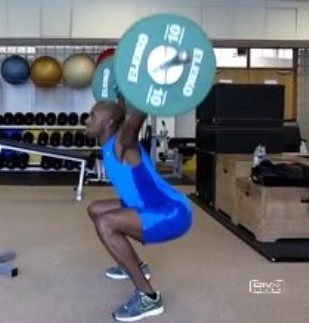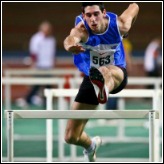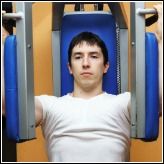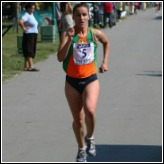Strength Training Tips to Get the Results You Want
These few strength training tips have been put together as a reminded of what really works in our effort to develop strength. I am surprised how often I need to be nudged in the right direction, or be reminded to apply what I already know in this area.
And so, in writing this article, I am helping myself as much as I hope to help you.
The strength training tips which follow will tell you exactly how to interpret and understand some of the strength training terminologies that are used in the field with the intension of helping you to laser target your training objective to achieve your goal.
By that I mean you will be able to design very specific training programs to meet very specific training needs. So, let’s get into it…

The Role of Different Muscle Actions
As muscle performs work the fibers behave in specific ways. Broadly speaking these behaviours are the ways in which our muscles function as we participate and perform certain actions in our sport. These muscle actions have been given specific names to help us to understand what is happening to the muscle as force is developed. Consequently, if we are to improve in our sport, we have to train our muscles according to the actions they are expected to perform in the sporting arena.
Concentric Muscle Actions
A concentric muscle action is the shortening of muscle fibers to cause the movement of limbs - normally referred to as contracting. Depending on whether the muscle is positioned posterior or anterior, a shortening of muscle fibers will usually cause the limb or body part to flex (posterior) or extend (anterior).
All human movement is as a consequence of muscles shortening to produce force. Most strength building exercises are built round this muscle action. Superior sporting performances are made when the speed and force of the contractions are improved. For recommendations of loading for this strength training tip, see the paragraphs on sets and repetitions in the article, strength training guidelines.
Eccentric Muscle Actions
Eccentric muscle action refers to the lengthening of a muscle while it is trying to shorten i.e. contract. This is sometimes referred to in athletics circles as yielding. A good example of an eccentric contraction at work is the lunge to reach a drop shot in badminton. ..
The player leaps forwards and lands with one leg ahead of them. The force of landing will cause their leg to bend, but what the player is actually trying to do is to stand up quickly to be ready for the next shot. The player will only be successful in standing up quickly if they are able to gain early control the bending (eccentric) part of the movement. This must be trained.
There are two ways of training to develop eccentric strength:
- The first, is to train with a heavy load which is lowered slowly.
- The second method is to train with a load which once lowering begins, cannot be lifted by the athlete alone.
True eccentric training is beyond the capability of the athlete to perform a concentric muscle action.
For this reason this training method should not be used by novice or young so be careful of this strength training tip.
Recommendations for eccentric loadings are:
- 3-5 sets
- 3-5 repetitions
- 105-120% intensity
Isometric Muscle Actions
When force is produced or developed by a muscle, but there is no change in the length of the muscle, this is called an isometric muscular action. There are few real life situations where working muscles don’t cause limbs to move – muscles are normally shortening or lengthening and are therefore decelerating or accelerating limbs.
The most obvious isometric muscular actions are in areas where a body part needs to be stabilized to allow another body part to produce force. These areas of the body are usually deep in the trunk and hip.
Isometric muscle action can also be seen in complex pattern of movement such as in a long jump take-off where the jumper goes from an eccentric action to a concentric action - commonly know as the stretch-shortening cycle (SSC). There is normally a time lag between the transfer from one muscle action to the next. During this time lag the muscle is neither contracting nor lengthening and it is here that the isometric muscle action is at work. It is an important element of the SSC.
Recommendations for isometric loadings are:
- 3-5 sets
- 10-15 repetitions, with a hold of about 5 seconds in each repetition
- 100% intensity
So as you can see it is vitally important that you understand these strength training tips and use them to strengthen your muscles in the way in which it is expected to function in the sporting arena.
These strength training tips will help you design better strength training programs. And once you know what you want and you are equally clear about the methods you can use to achieve it, it is then easy to achieve your training objectives.
Sign Up For The Latest Track And Field News And Improve Your Athletic Performance!
From
"Strength Training Tips to Get The Results You Want" To "Faster,
Stronger, Better – Your Shortcut To Improved Athletic Performance"
Learn more about strength training exercises







